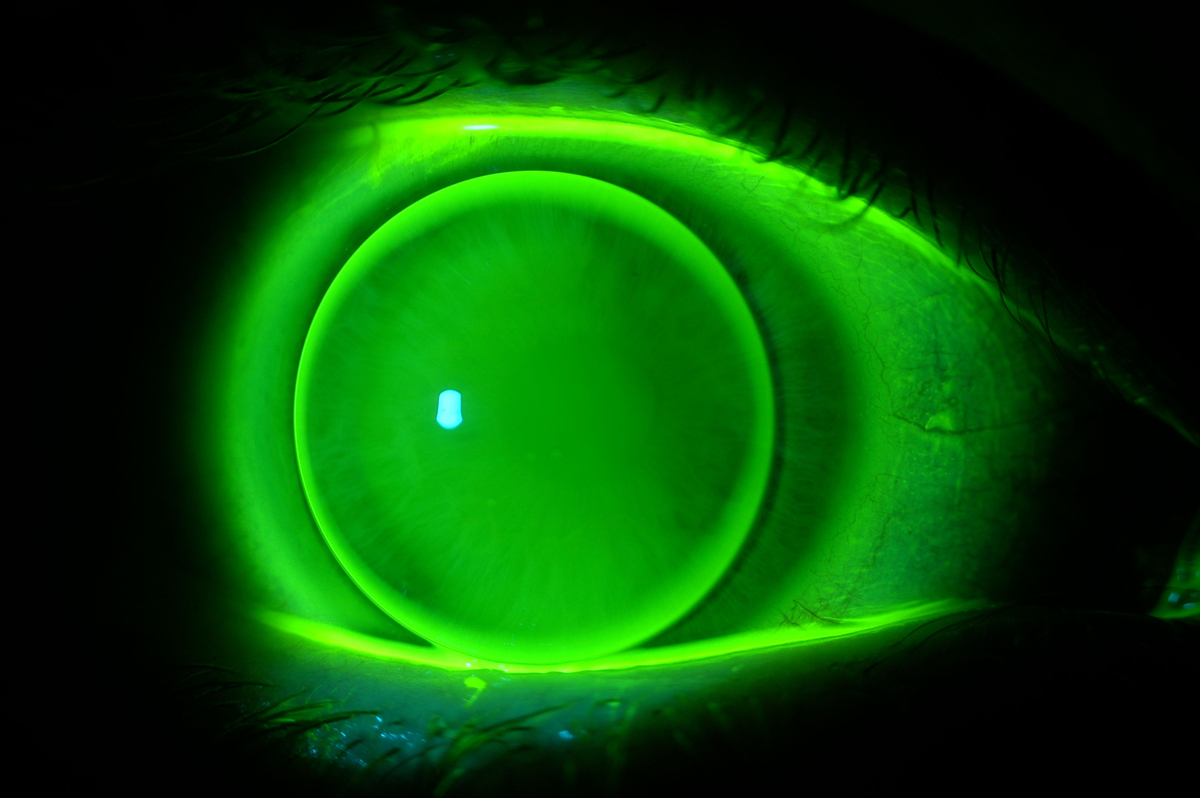 |  |
There are many reasons to promote corneal gas permeable (GP) lenses as a modality in your specialty contact lens practice. For patients with regular corneas, soft lenses have become increasingly popular as parameters expand and toric designs improve. The optics of a corneal GP lens are likely going to beat out the best soft contact lens designs available in the case of significant astigmatism, however.
For patients with irregular corneas, scleral lenses have become a practitioner favorite due to their smooth transition and adaptation period and high rate of success when it comes to vision and comfort. Unfortunately, fitting all corneal irregularities with a scleral lens is hard to justify. This is where corneal GPs come in. This modality is associated with fewer health risks and is less complicated than scleral lenses.
One of the barriers to entry in fitting a corneal GP is the work involved in getting a first-time wearer adapted to the lenses. There are several simple steps to include in your fitting process to make the transition easier on you and your patients.
 |
Successful GP fits rely on an effective mix of patient education, lens design choices and savvy assessment of the patient’s physical and psychological needs. Click image to enlarge. |
Post-refractive Surgery
Educating. Before you fit corneal GPs, consider how to prepare your patients. There is an association between the type of language practitioners use to introduce patients to GP lenses and the dropout rate. Using terms like “pain” or “discomfort” greatly increased the chances that a patient would not continue with the lenses. Terminology like “lens awareness” and “lid adaptation” was met with more favorable outcomes.
Expressing enthusiasm when presenting GPs as an option also increases the likelihood of patient success with the modality. Offer stories of patients who were happy with their corneal GP lenses to set the stage for new patients to have a similar experience.
Ordering. We recommend ordering corneal GP lenses empirically so that the first lens your patient experiences will be one that was designed specifically for them. Take advantage of online calculators, do your own calculations or employ the assistance of laboratory consultants when you conduct a diagnostic fitting. Compared with trial lenses, a set of lenses personalized for your patient will offer better comfort and optimized optics—the biggest motivators for adapting to a corneal GP.
We recently dispensed empirically ordered lenses for a first-time GP wearer who exclaimed that they were “a miracle.” Patients who have a positive first experience with corneal GPs will be more motivated to commit to the adaptation process and will, in turn, see better results.
Coating. We’ve also found success ordering corneal GP lenses with Hydra-PEG coating (Tangible Science) for first-time wearers. We order the coating if the lenses are not wetting well, there are deposits present or comfort is less than satisfactory. This coating makes the lenses slicker and reduces friction in the eye as the eyelids make contact with the lens.
For first-time lens wearers, assume comfort will be an issue during the adaptation process. Preemptively offering Hydra-PEG offers a smoother initial awareness period.
Introducing. We suggest instilling a topical anesthetic before applying GP lenses. Doing so dramatically improves a patient’s first interaction with the lenses by offering a more gradual introduction to a new modality.
As you evaluate the fit and vision of the lenses, the anesthetic begins to wear off. This way, the patient will become more aware of the lenses on their eyes over time for a more comfortable initial experience. Patients will be much more likely to continue with the modality if they’re not thrown into it unprepared.
Scheduling. Talk with your patient about gradually easing into a more consistent daily wear schedule. There is a physiological adaption factor that contributes to the comfort of a GP lens. For most patients, lens awareness does not go away after one day of lens wear. Encourage the patient to wear the lenses for an hour the first day, a few more the next and so on. Let the patient know that over the first week or two, their eyes will adapt to feel of the lenses and they will be able to wear them for longer periods of time.
If a patient expects to be able to follow a normal lens wear schedule the day after their dispensing visit, they may give up on GPs when they instead find themselves struggling with discomfort.
Corneal GPs have been around for decades and have held a steady percentage of the contact lens market for the last several years, even in the face of increasingly successful soft lenses. This modality addresses corneal irregularity, offers pristine multifocal optics and improves comfort in ocular surface disease, to name a few benefits. Keep the tips we provided in mind and you’ll be on your way to successfully fitting corneal GPs in no time.
Dr. Melchione completed a residency in cornea and contact lenses this year and will be practicing in Blacksburg, VA.


